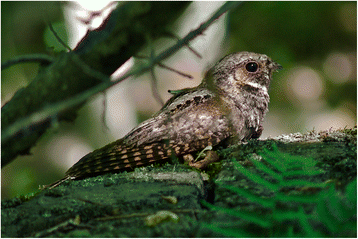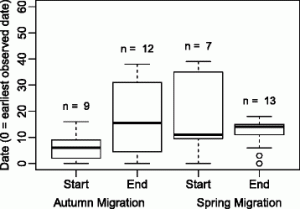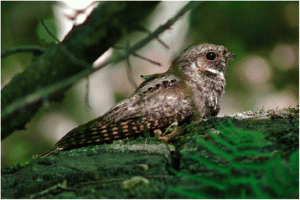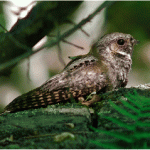
Eastern whip-poor-will
Eastern whip-poor-will (Antrostomus vociferous) is continuously declining due to habitat loss and unavailability of insects for food. Little is known about whip-poor-will migration because of their nocturnal quite habit during non-breeding season. At high latitude 80% avian species are migratory wherein factors affecting migration includes predators, anthropogenic threats and pathogens. Migratory strategies allows individual to track seasonal changes mostly for temperate breeding aerial insectivores. However, population declines among temperate insectivore birds due to extreme weather condition, cost of migration and reliance on sensitive prey. In addition it is important to determine the migratory routes, year round habitat requirement and temporal constraints of threatened species.
Geolocator deployment of Whip-poor will

There were 20 males and 2 females of whip-poor-will have been tracked using geolocators in four regions of Canada. The study shows that this species breed more in northern part than southern breeding population and experienced different wintering conditions. Also a high migratory cost happens such as novel threats, energy expenditure and the ability to adjust time in tracking breeding ground condition. In contrast, both eastern and western breeding individuals wintered together wherein mostly concentrated in Guatemala and some provinces of Mexico. However, male often have higher benefits of early arrival on the breeding grounds thus accept higher cost of wintering further. Additionally, early arrival on breeding grounds is more advantageous on whip-poor-will males allowing occupation on higher quality territories.
On the other hand female whip-poor-will forced to migrate further on lower latitude with less competition and more abundant resources. Most of this species travel overland through Mexico and Central America. However, only two individuals flights across portion of the Gulf of Mexico during autumn and spring. It just shows that this pattern is the response to prevailing winds and availability of resources along different route. Also more species migrating along Eastern North America, South and Central America over ocean flights during autumn. While in spring more species taking longer over land route around western side of the Gulf of Mexico.
Therefore, geolocators is helpful in identifying wintering areas, stopovers and migratory route of whip-poor-will. These migratory stopovers in the southeastern and central United States as well as in southern Mexico and Central America are both important for the whip-poor-will species. Finally, habitat protection and insect population might increase the number of these species despite pressures of long migrations and climate changes.
Source: Prepared by Joan Tura from Springer BMC Zoology
Volume 2:5, 2017

